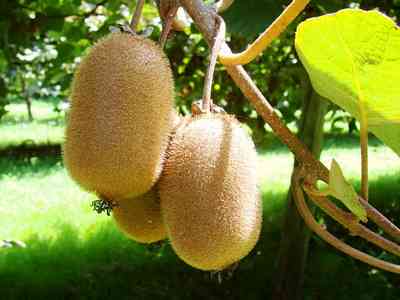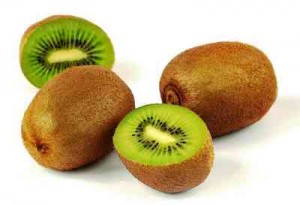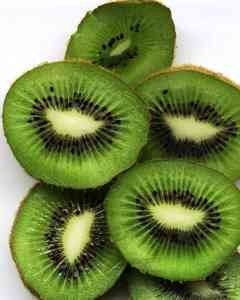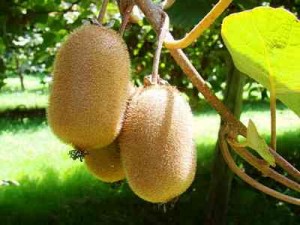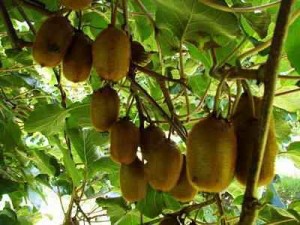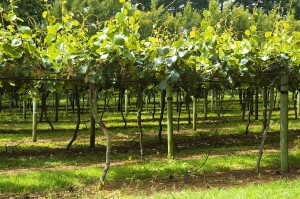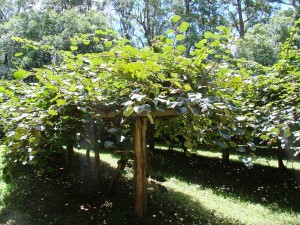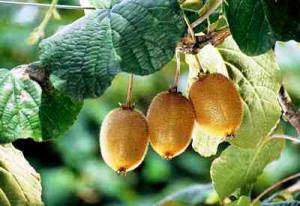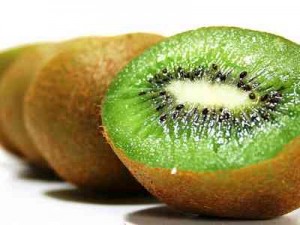Try Kiwi Fruit Tree Gardening in Spain
kiwi fruit Kiwi tree fruits were introduced to the western world at the beginning of the 20th century. Selection of Spanish Gardening guides for you.
Ever thought that kiwi fruit hailed from New Zealand and grew on a tree or shrub?
Guess again because the green fruit with the black seeds actually originates from China, were known as gooseberries and grow on a vine!
Kiwi Tree Gardening fruit in Spain.
Their scientific name is Actinidia deliciosa and they originate from Southern China, where they were known as Yang Tao (sunny peach) or Mihou Tao (macaque peach).
In fact, in China they are still considered the national fruit.
They were introduced to the western world at the beginning of the 20th century when the missionary Isabel Frasier brought them with her back to New Zealand after visiting missions in China.
Early nurserymen in New Zealand, such as Alexander Allison, Bruno Just, and Hayward Wright, recognized the potential of the fruit and it soon became a popular backyard vine.
Horse Riding Holidays in Province of Almeria
A selection of Horse Riding Holidays in the Almeria Area TAKE YOUR PICK
Chinese Gooseberries
It was not until the 1940s commercial planting began. Initially, Kiwi fruits were known as “Chinese gooseberries” because of their visual resemblance to gooseberries (They do not belong to the same genus as gooseberries, though).
The fruit was renamed for export marketing reasons in the 1950s; briefly to melonette, and then later by New Zealand exporters to kiwi fruit.
This name “kiwi fruit” comes from the brown flightless bird and New Zealand’s national symbol, and also a colloquial name for the New Zealand people.
Kiwi Tree Gardening.
Kiwi fruit in Spain
Growth habit of Kiwi Fruit
The fruit is borne on a vigorous, woody, twining vine or climbing shrub.
In cultivation it is supported on a trellising system.
In general, the vines put out new leaves in mid-March, bloom in early May and the fruit ripens in November after the leaves have fallen.
With a few exceptions, the plants are normally dioecious, meaning individual plants can be either male or female.
Only female plants bear fruit, and only when pollinated by a male plant.
The flowers are mostly insect-pollinated, but because the flowers are not very attractive to bees, it may be necessary for the home-grower to blow or dust collected pollen over the female flowers.
Culture of the Fruit.
Kiwi plants will tolerate part shade but prefer a sunny location where they can ramble across some type of trellising system.
Strong Winds
The vines should be protected from strong winds as spring gusts can snap off new growth where it emerges from the canes.
Kiwi plants need at least 240 frost-free days, and they seem pretty susceptible to sudden drops in temperature in early autumn or late winter.
They can withstand a temperature of about -12° C (10° F) when fully dormant, but they are still vulnerable to sudden lower temperature and must acclimate slowly.
Generally, where peaches, almonds and citrus thrive, so do kiwi fruits.
All cultivars need a certain period of winter chilling and their needs vary dramatically, dependent upon cultivar.
The most popular cultivar, Hayward, does best with a winter rest of 800 hours of chilling (defined as total hours between 0 and 7° C (32° and 45° F.)
Kiwi Tree Gardening Kiwi fruit in Spain.
The soil should be acidic, with a pH of about 5 – 6.5, rich in organic matter and not too salty.
If the soil is too basic, leaves will show nitrogen deficiency.
Kiwi fruit plants need large volumes of water during the entire growing season but must also be in well-drained soils.
Watering regularly in the heat of the summer is a must. Never allow a plant to undergo drought stress.
Symptoms of drought stress drooping leaves, browning of the leaves around the edges, and complete defoliation with re-growth of new shoots when the stress is continuous.
More plants probably die from water related problems than any other reason.
The Vines also need a lot of nitrogen, especially in the early season, so add a nitrogen-rich fertilizer early on.
Adding nitrogen in late season may cause the fruit to store poorly, so avoid overdoing it. Early fertilizations can be done with an avocado tree fertilizer, while watering well, around March.
Fertilization
Subsequent fertilization can be done in early summer. Mulching is also recommended, using manure or straw, but the mulch should not come in direct contact with the vine.
ines require vigorous (winter) pruning, similar to that of grapevines.
Fruit is borne on one-year-old and older canes, but production declines as each cane ages.
Canes should be pruned off and replaced after their third year.
Pests and diseases not a big problem to kiwi fruit plants. However, the plant attracts animals like cats (that love to rub against new shoots, damaging them), deer, garden snails and gophers.
Be wary of root-rot nematodes that may weaken the plant, especially in its young stage.
Kiwi Tree GardeningKiwi fruit in Spain
Tree Gardening
Kiwi fruit in Spain
Fruit and harvest of Kiwi Fruit
The fruit consists of a hairy, brown peel containing green flesh, with white pulp in the center, surrounded by black, edible seeds.
The fruit has a sweet taste, similar to a mixture of banana, pineapple and strawberry.
Kiwi fruit should be harvested around mid-November, when the seeds become completely black.
Once harvested, place the hard fruit into plastic bags and put into the refrigerator for keeping.
When needed, the fruit can be taken out of the refrigerator and ripened on the counter for a few days in a plastic bag. Well stored fruit can last for several months.
Rich in Vitamins
Nutrition-wise, kiwi fruits being rich in many vitamins, flavonoids and minerals. In particular, they contain a high amount of vitamin C (more than oranges), as much potassium as bananas and a good amount of beta-carotene.
Raw kiwi fruit is also rich in the protein-dissolving enzyme “actinidin” which is commercially useful as a meat tenderizer.
In the home kitchen, meat can be tenderized by placing slices of kiwi fruit over it or by rubbing the meat with the flesh.
After 10 minutes the fruit must be lifted or scraped off, otherwise the enzymatic action will be excessive. The meat should then be cooked immediately.
Please be aware that kiwi fruits can be allergic to some individuals because of the actinidin. The most common symptoms include itching of the mouth, lips and palate, but can range to a more severe level such as wheezing or collapsing.
But there is nothing on earth like kiwi fruit – brown and fuzzy on the outside, green and zesty on the inside. Enjoy the benefits of this delicious fruit and its festival of flavour…
Marc Vijverberg
Everything for your garden!!!
Marc Vijverberg and Gurli Jakobsen
638 180 284
659 880 444
Guardamar del Segura
A selection of Online Yoga and Meditation courses.
CLICK TO SEE WHAT IS ON OFFER
Heal Relax and Re Charge.
Find and compare Multi-Day Online Wellness Retreat
46,51,8,36, photo size,49 ganew,38. Kiwi tree fruits were introduced to the western world at the beginning of the 20th century.
Spain Info
Spain info covers local towns with local accommodation. info also covers info local days out in Spain on the Mediterranean. With information on gardening in Spain Mediterranean style. Spain info with information on cooking Mediterranean style.
Covers Bowls Clubs Golf Go Karting fishing Caves and other sports here in the Mediterranean.
Spain info also lists the Local Hot Water Spas many of them dating back to Roman times.
Optimised March 24 P93 W100 July 10 H 62 Feb 14 H 77 Kiwi Fruit 23 h 92 May 1 H 97 Kiwi Fruit 30 2 H 77 P 97 FK 100 F
Spain Info. kiwi fruit, San Francisco De Asis, Urb Marina, San Fulgencio, 03177, Alicante, Spain.
Site Disclaimer
Disclaimer: Whilst every effort has been made to provide accurate information, no liability will be accepted for misinterpretation, misrepresentation, errors or omissions - the information provided by our Websites is for use as a guide only and is issued in good faith as information..
All photographs images and FILM material is subject to the understanding that as they are in the public domain they can be used and shared as seen to be appropriate and unless showing a sign that they are covered by copyright law. This also covers Social media operations.
1999---2024
